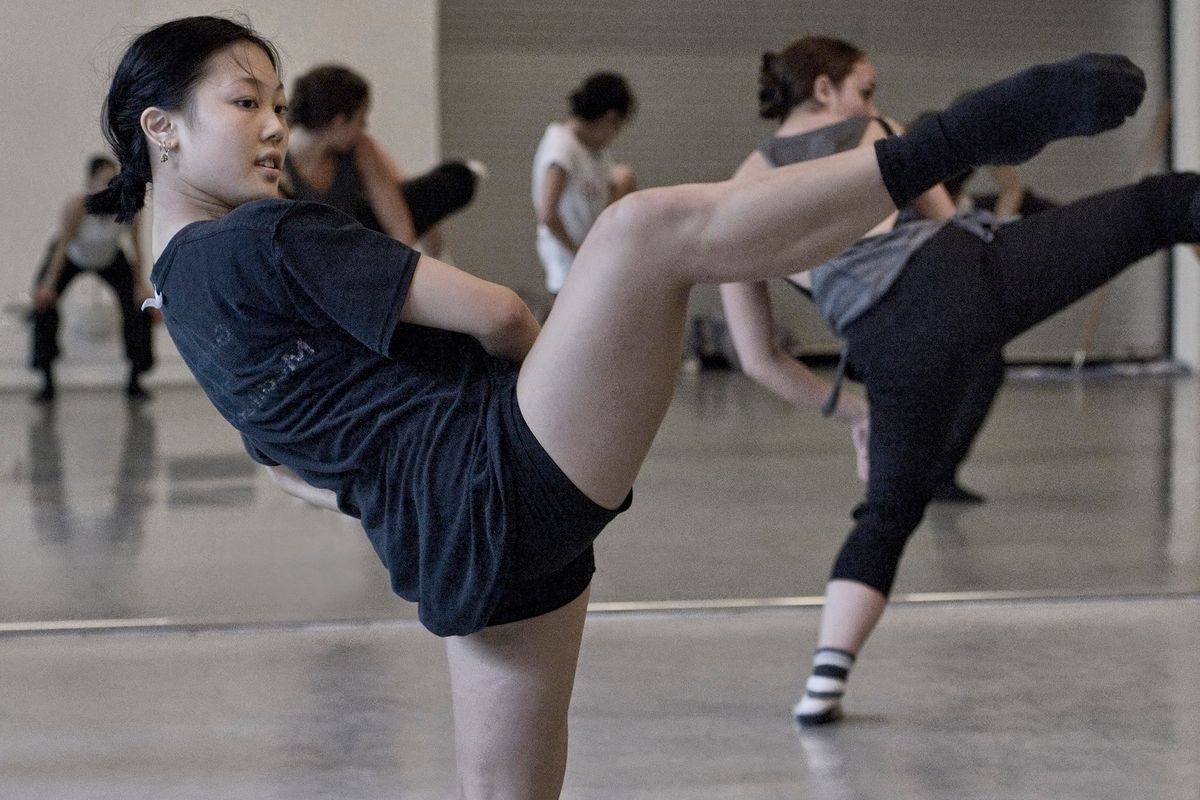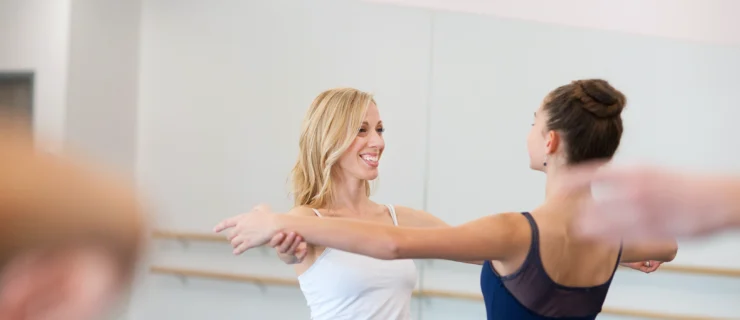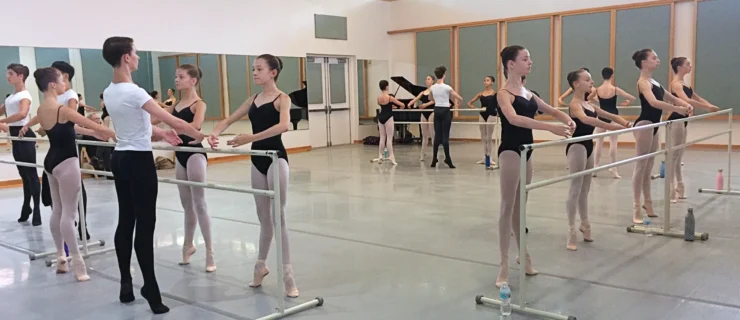Unlock Your Potential: How Contemporary Ballet Summer Programs Can Empower the Individual Dancer
Before attending the Alonzo King LINES Ballet summer program at age 18, Maya Harr did not have much experience with improvisation. In fact, she was such an introverted bunhead that even the word seemed scary. “The teacher came into the studio, turned off the lights, put on music and told us to dance,” says Harr, now a LINES company member. “We didn’t stop moving for 45 minutes, and I was grateful for the freedom I’ve found.”
You might feel obligated to spend your summer honing your technique at a classical ballet program. Yet as ballet companies open their repertoires to more contemporary works from choreographers like Aszure Barton, Kyle Abraham, Crystal Pite and Nicolo Fonte, you may want to consider opening yourself up to contemporary styles and the outside-the-box thinking that underlies them. “This work is necessary for the future of ballet,” says Dwight Rhoden, artistic director of Complexions Contemporary Ballet and its affiliated summer intensive.
A contemporary ballet summer program can do more than improve your versatility. In addition to learning new skills like improvisation or Gaga, you’ll likely be immersed in a more collaborative environment that mimics what it is actually like to be in a ballet company. Gaining experience with the creative process, as well as thinking and moving in new and unexpected ways, may also help you get to know more about yourself.
Defy Categorization

“Contemporary doesn’t mean less clear, or just ‘Let go.’ Yes, there is more freedom, but there are also principles of movement,” says Dwight Rhoden, pictured here correcting a student at Complexions’ summer program. Photo Courtesy Complexions Contemporary Ballet.
Artemis Gordon, artistic director of the dance program and summer intensive at Arts Umbrella in Vancouver, thinks students should avoid categorizing themselves as either a ballet or modern dancer. “A great ballet dancer is a great dancer,” she says, adding that summer is an ideal time to educate yourself in new styles and approaches.
Christine Welker, education director of the new Terminus Modern Ballet Theatre summer program in Atlanta, agrees, adding that a well-rounded approach to your training is key to seamlessly navigating different styles. At TMBT, students spend the first part of the day “pulled up,” taking ballet and pointe classes. The second part of the day is more grounded, with new warm-up exercises to ready the body for the different dynamics that neoclassical and contemporary repertoire and partnering require.
Most contemporary summer programs are classically based, with half the day spent working on ballet technique, pointework, variations and partnering. What sets them apart is the integrated focus of contemporary methods and practices often used in dance companies today.
Compared to the uprightness of classical ballet, contemporary movement asks for a new sort of coordination as the body moves both in and out of balance and in all possible relationships with the floor. “Contemporary doesn’t mean less clear, or just ‘Let go,’ ” says Rhoden. “Yes, there is more freedom, but there are also principles of movement.”
For Complexions’ intensive, Rhoden developed a class with co-artistic director Desmond Richardson to introduce students to contemporary work. ‘”We move through the regular class sequence, from pliés all the way to grand allégro, with emphasis on shifting weight and a more exploratory torso,”” says Rhoden. “While we do give dancers the power to go outside the box, we are focused on a full-body technique.””
Beyond ballet and contemporary, you may also be exposed to modern dance techniques, hip hop, improvisation and cross-training workshops. The variety of classes can help start an important dialogue with yourself and your body: Who am I? What is my body? How do I like to move? “All of the information has to be processed in order to make the connections,” says Gordon. “Within the diversity of every class, they’re all saying the same thing.”
Find Your Own Agenda

“Being able to move in different ways adds longevity to your career,” says Alonzo King LINES Ballet’s Maya Harr, pictured here. Photo Courtesy LINES Ballet.
At Arts Umbrella, students are expected to make choices about their own learning styles and responses to movement and process. Keeping a journal, setting an internal motivation or goal for class, and asking questions when something is unclear are encouraged and can hold dancers responsible to themselves, their peers and the ideas being presented by the person in the front of the room. For young bunheads used to being told what to do and think in class, this may be a big shift. “You have been programmed your whole life to try to be ‘good,’ ” says Gordon. “But here no one is telling you what to do or what will make you successful.”
Rhoden takes a simliar approach. “I ask all of the dancers to leave here with something they did not walk in with,” he says. “It could be more stability, a triple, an idea, a discovery, an awareness. You can decide what you want to get out of this class. You can come to the barre with an idea for the day that you want to address, even if I don’t see it.”
“In super-classical programs, it really is all laid out for the student,” says Rees Launer, a dancer with Charlotte Ballet who spent a summer at Arts Umbrella. “Here the teachers push you to take what they are teaching to learn more about yourself: what you enjoy and where you need to grow the most.”
Contemporary summer intensives also allow dancers a chance to explore contemporary repertoire and have a hand in creating new work. At TMBT, students worked with company choreographers Heath Gill and Tara Lee on an original piece, which they performed at Atlanta’s High Museum of Art. And at Complexions, both repertoire and new works are taught to students through a responsive dialogue: Rhoden encourages students to take a given movement or taught phrase and “capture it”—in other words, layer it with individual meaning and draw the audience into a story.
An Eye-Opening Summer

Summer students at Terminus Modern Ballet Theatre’s advanced intensive. Photo by Daley Kappenman, Courtesy TMBT.
Whether it is learning how to define your own goals and success, actively participating in the choreographic process for the first time, or figuring out how to perform outside of a traditional theater space, contemporary summer programs aim to give you the kind of eye-opening experiences that help you build more confidence.
While Harr’s contemporary summer was a surprise gateway to her career with LINES, it was also a journey of self-discovery that helped her find her own voice. “It opened the doors on how to dance,” says Harr, “and I learned there is not just one way. Everyone’s body and way of thinking is different.”
Launer agrees. Learning Crystal Pite’s choreography in a repertoire class and Arts Umbrella’s overall focus on self-creation were two highlights of his summer there that will stay with him. “I didn’t realize until now how much you can branch out with your technique, how much more ballet can come alive when you learn how to put yourself in it.”





